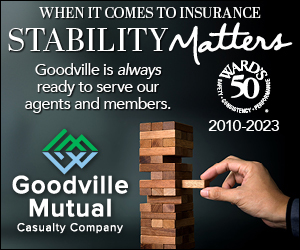Help Clients With Common RV Coverage Gaps
Print this Article | Send to Colleague
By AnneMarie McPherson Spears
High interest rates and declining consumer buying power led to lower demand for recreational vehicles (RVs) in 2023, according to the RV Industry Association (RVIA). However, as interest rate pressure begins to ease, RV wholesale shipments are expected to increase 12%-15% this year.
The pandemic-accelerated trend of younger generations embracing the RV lifestyle hasn't slowed, either. The median age of the new RV buyer is 32 years old, according to the RVIA. And 39% of new RV buyers purchased their joyride as a place to stay and explore the outdoors while working remotely.
Of course, the RV insurance industry isn't immune to the current market challenges. “We're seeing a bit of a hard market in some segments, particularly motor homes, where rates are increasing due to inflation and increased losses in recent years," says David Knapp, director of specialty product management at Foremost, a Farmers Insurance company. “Insurance is still broadly available, but carriers are having to react to higher usage and losses with rate and some underwriting changes."
As more consumers seek the freedom and adventure of the RV life for the first time this year, seasoned RV owners use vehicles in new and creative ways, which means insurance coverage gaps need to be addressed.
“For many customers, their RV is a passion and home away from home," Knapp says. “Independent agents who are aware of the various types of travel trailers and motor homes will be in a better position to serve their customers' needs. The coverages, rates and underwriting on an inexpensive pop-up camper trailer are different than those of a luxury fifth-wheel or Class A motor home."
For example, that inexpensive trailer isn't even required to have insurance while motor homes are, explains Matt Jacobs, RV product manager, Progressive Insurance. “With a travel trailer, an owner needs to decide between insuring or self-insuring."
The motor home, though, has “more state regulations, requirements and coverage offerings for liability insurance," Knapp says. “There also may be differences in coverage needs in the amount of personal property coverage, towing and roadside assistance, and unique coverages like adjacent structures or additional living expenses."
Agents should also be aware of the unique coverage options. “What's covered by a standalone RV insurance policy compared to an auto or property policy can vary greatly," Jacobs says. “Usually, if a travel trailer is on an auto policy, it is only going to be covered while it's attached to the auto. And when an RV is on a property policy, it is usually only going to be covered while on the property of the owner."
Further, standalone RV policies can vary greatly from one insurance carrier to another, Jacobs adds. “For example, some insurance carriers take depreciation into consideration when there is a partial loss."
Agents should help RV owners think through “what types of loss settlement they'd like — a lower cost, lower claim settlement [with] actual cash value coverage, or a full total loss replacement option that removes any depreciation," Knapp says.
One common gap to be aware of is premises liability, points out Chris Bartram, product director, specialty vehicles, at Liberty Mutual and Safeco Insurance. “RVs have the liability of both an auto and a home," he says. “While liability for the RV as a moving vehicle is covered under auto liability, premises claims — like incidents while social hosting or dog bites—require the additional protection of vacation liability coverage. This is an optional coverage and not all carriers offer it."
Coverage can be also customized to include additional living expenses, scheduled medical benefits, coverage for adjacent structures, full-timer liability and even coverage for pets, Knapp says. And agents shouldn't forget to ask their clients about accessories and optional equipment that may need to be covered but might not be included in the base policy, such as air conditioners and satellite dishes.
Customizable insurance only gets more important as RVs are increasingly customized. “Like other industries, do-it-yourself conversions, off-road and electric are really starting to take off," Jacobs says.
“With luxe finishes and safety technology — like back-up cameras, sensors and auto-leveling — becoming mainstream, the replacement cost of new RVs is on the rise," Bartram says. “Consumers are taking it a step further, adding solar arrays, Internet of Things (IoT) technology and even 'home' security."
And with younger RV users entering the market, “this combination of higher replacement cost and inexperienced users could impact future loss cost trends," Bartram warns.
Another new trend that can cause coverage gaps is peer-to-peer renting, an emerging usage that is likely to continue to grow, Jacobs predicts. In those instances, “some carriers allow the unit to remain eligible for a policy, but coverage may not always be provided during the rental period," Knapp says. “As more and more RV owners are now renting out their unit, customers and agents should be aware of the carrier's eligibility rules and policy exclusions."
AnneMarie McPherson Spears is IA news editor.


